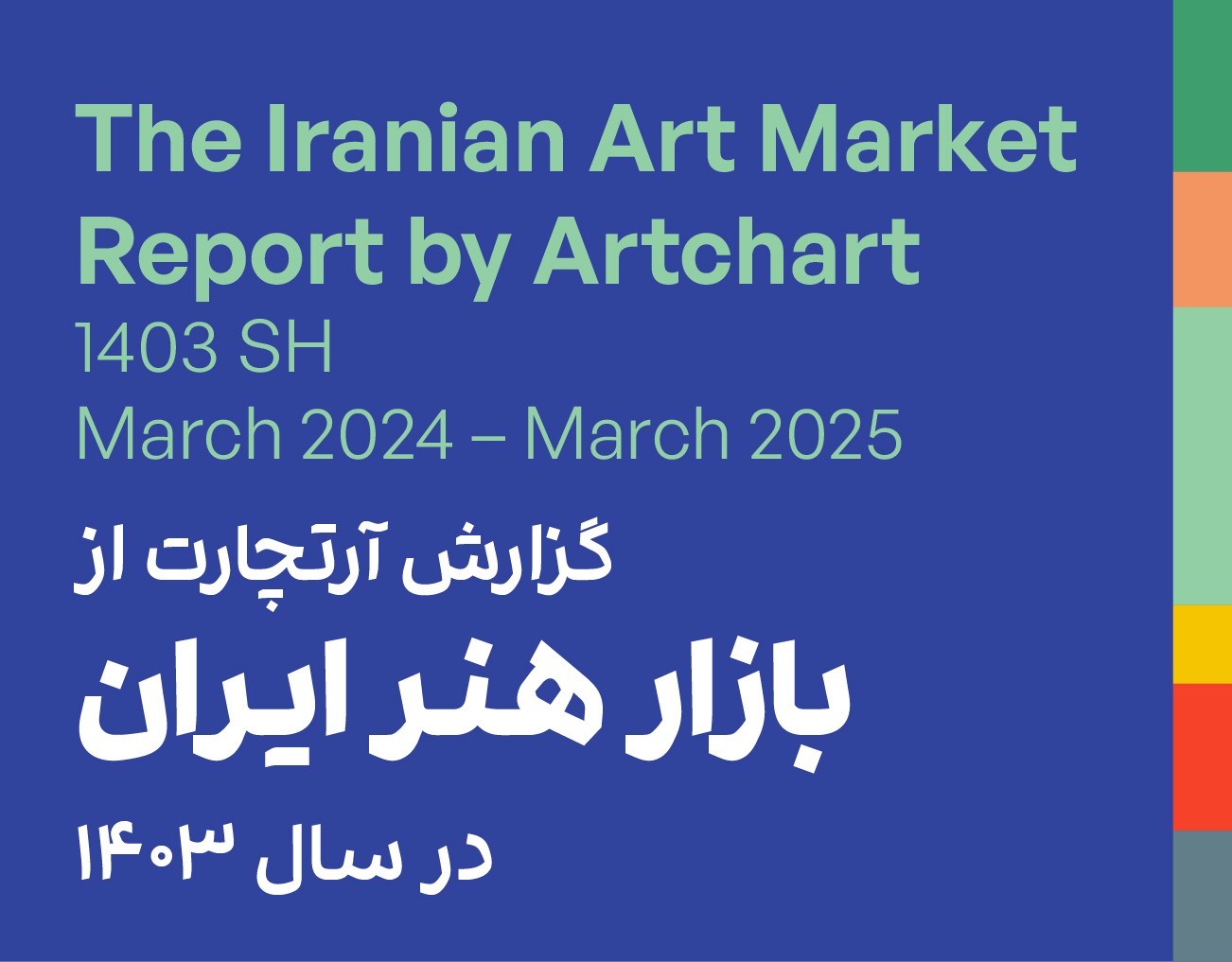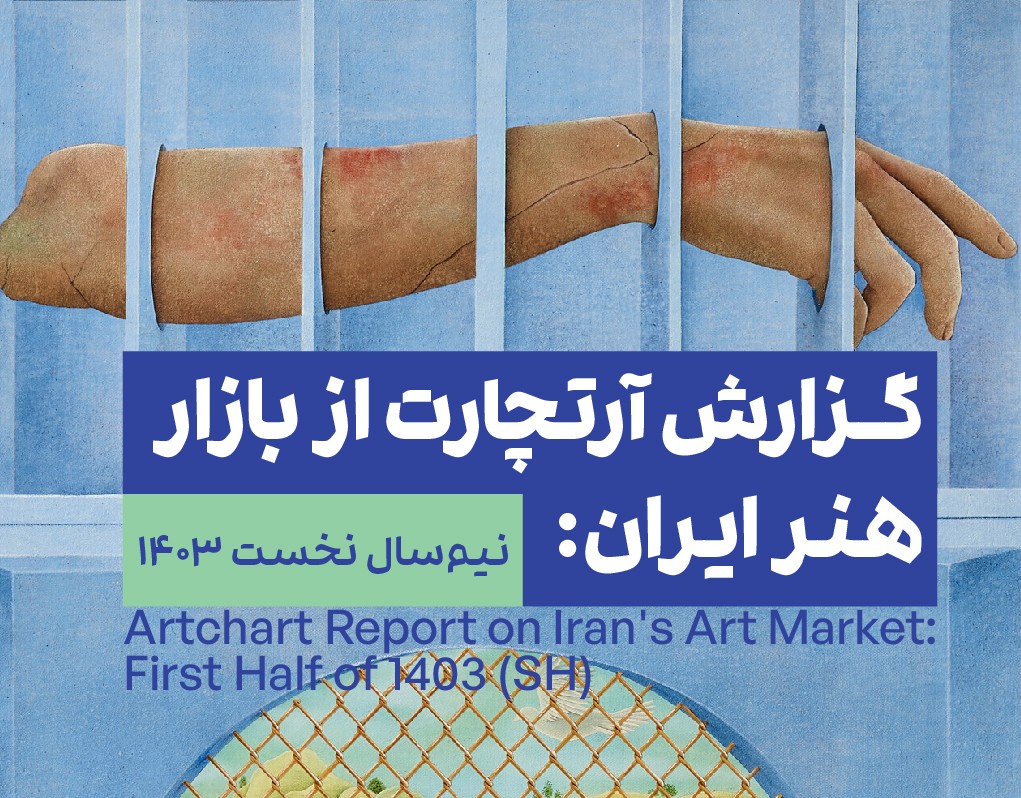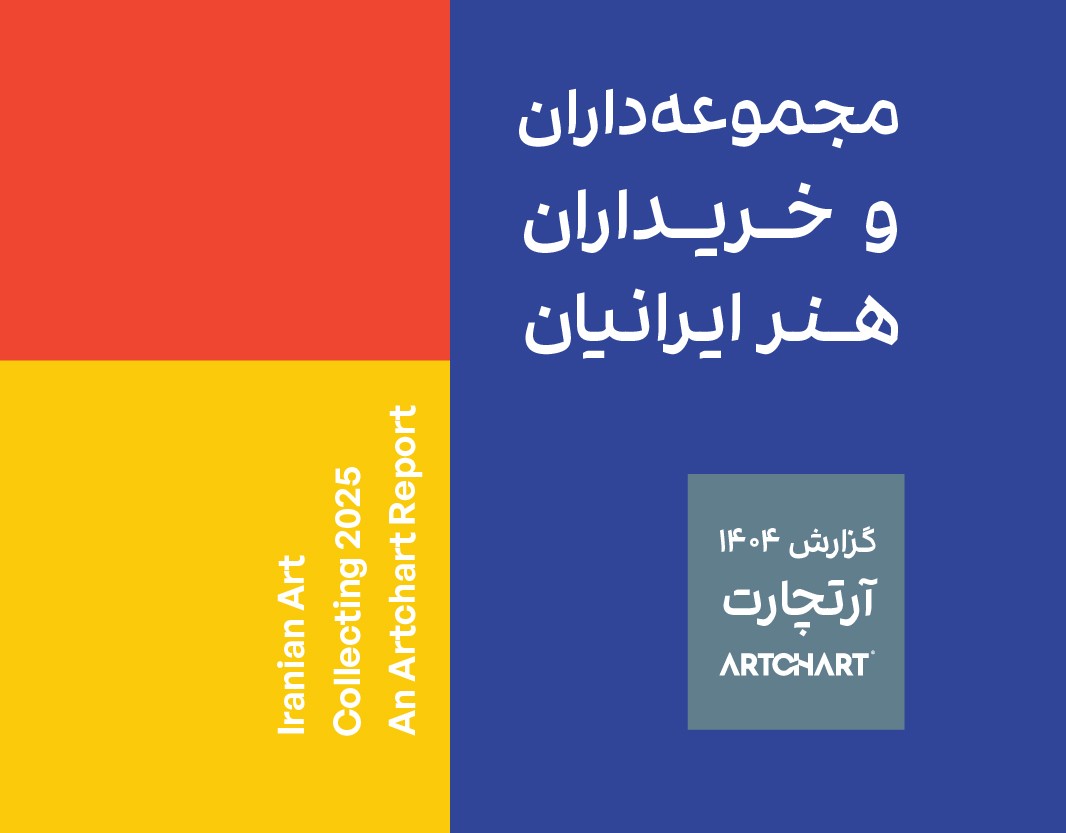Download the Iranian Art Market Report | 1403 SH (March 2024–March 2025) [PDF]
The year 1403 SH (March 2024–March 2025) saw the staging of three editions of Tehran Auction alongside hundreds of international auctions that featured works by Iranian artists. Regional and global art fairs such as Art Basel, Frieze, Art Russia, Art Dubai, and Abu Dhabi Art also hosted Iranian galleries and artists. After nearly two decades, the Middle East once again attracted renewed attention from leading international auction houses, becoming a key venue for both online and in-person sales. Notable examples include Christie’s online edition of Modern and Contemporary Middle Eastern Art in Dubai and Sotheby’s inaugural Origins auction in Diriyah, Saudi Arabia, led by star auctioneer Oliver Barker. While these high-profile returns have not yet had a direct impact on the Iranian art market, they represent a potential reconnection point between Iranian art and the global market network. The continued visibility of Iranian art was also supported by dedicated exhibitions of modern and contemporary Iranian works, as well as smaller-scale auctions in neighboring countries, such as AlBahie.
Domestically, both observations and data suggest that neither Tehran Auction’s overall sales nor gallery activity have fully returned to their pre-pandemic levels (for details on past Tehran Auction performance, see here). A notable development in 1403 SH was the introduction of Tehran Auction’s first dedicated sale of Modern, Classic, and Traditional Iranian Art. The top lot of this session—Portrait of a Seated Girl by Reza Abbasi—achieved a record price of USD 264,000. In the primary market, gallery activity in the capital, Tehran, showed slight growth, although other cities maintained a level of exhibition and gallery activity in line with previous years.
The total public auction turnover for Iranian art—both domestic and international—was estimated at USD 17.2 million, reflecting a 5% decline compared to 1402 SH (March 2023-March 2024). This contraction may largely be attributed to weaker performance during the first half of the year, in which sales volume dropped by 22% year-on-year. However, market momentum shifted in the second half of the year, with a 67% increase in sales compared to H1 1403 SH, and an 8% rise relative to H2 1402 SH.
Artists aged between 40 and 49 accounted for the largest share of total sales in 1403 SH, generating approximately USD 3.5 million. Nonetheless, key modern masters such as Bahman Mohasses and Manoucher Yektai also made a strong financial contribution to market performance.
A notable shift in international demand came from China (mainland and Hong Kong), which emerged as a significant destination for Iranian art sales. In fact, China surpassed France to become the fourth-largest market for Iranian artworks by total auction turnover.



